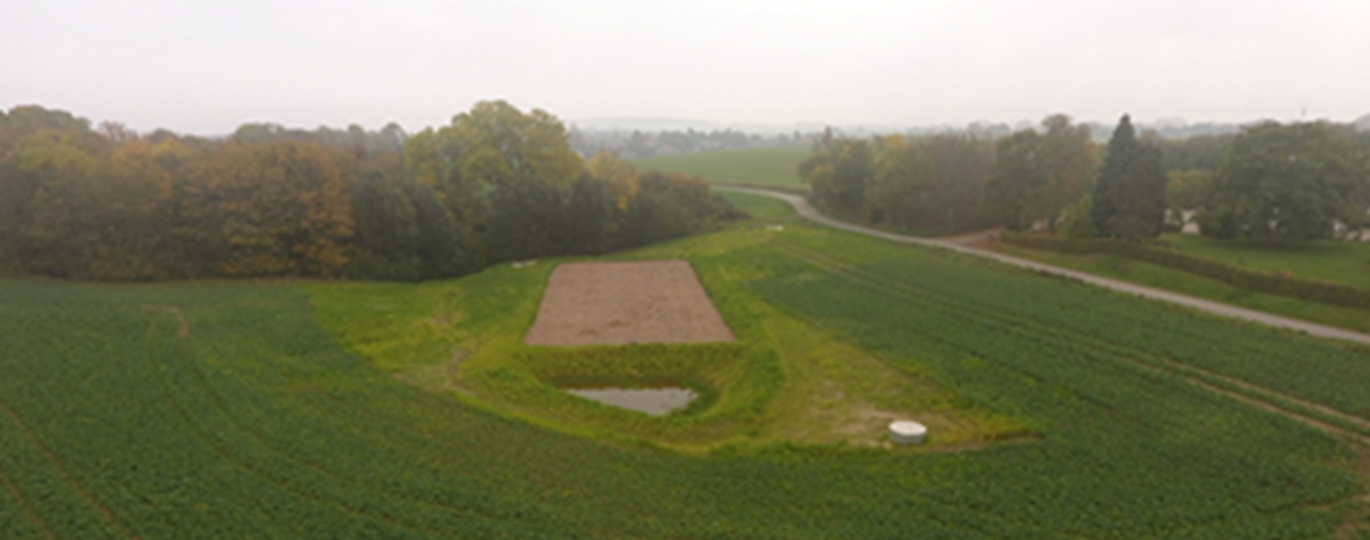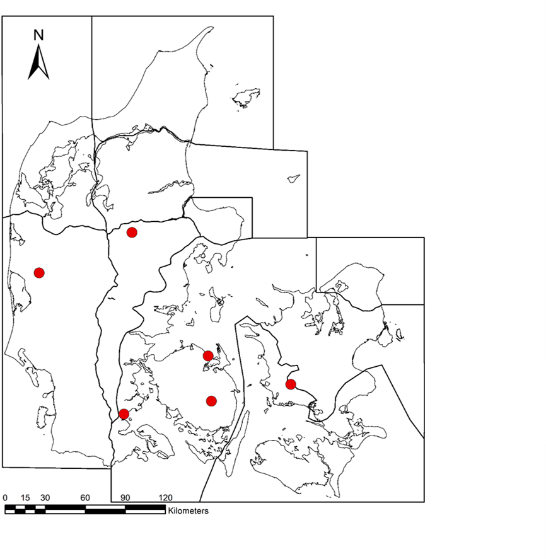Results from the first year - six new bioreactors using wood chips
There is a huge need for new measures to help reduce nitrogen leaching to the aquatic environment. Recent results from Aarhus University demonstrate that between 29 and 49 percent of the nitrogen are removed when drainage water is led through a bioreactor with wood chips. However, this is to be confirmed in more experiments.


Bioreactors with wood chips (also known as ”constructed mini-wetlands with biofilters”) is a so-called collective measure with the purpose of reducing the leaching of nitrogen (N) to the aquatic environment. The principle behind the drain filters is that drain water is led through a biofilter consisting of organic material, such as wood chips. In the filter, under anaerobic conditions, bacteria metabolize the nitrate in the drain water into free atmospheric nitrogen.
Testing bioreactors
Six test facilities have been established in various regions in Denmark (Fig. 1). The facilities remove nutrients from drainage water from catchment areas ranging between 16 and 120 ha. These facilities will help us achieve knowledge on rinsing of water at large variations in annual precipitation – ranging from 600 mm on average to 1100 mm. Four of the facilities consist of a basin for phosphorous precipitation and a wood chip basin for nitrogen removal (cf. the photo). The facilities in Slagelse and North Funen are major facilities each with three wood chip basins.
The new bioreactors are designed in a way that ensures that the minimum retention time of the drainage water is min. 10 hours at maximum inflow into the system. This allows for achieving an excellent nitrogen reduction impact even at low winter temperatures, when bacteria are less efficient at reducing nitrogen. Water temperatures can be so low that nitrate removal actually stops.
Large effect at reduced space
Tests during the first year demonstrated that the facilities removed between 29 and 49 percent of total nitrogen in the drainage water. However, the Gyldenholm plant only removed 14 percent, which was due to the fact that the pumps actually performed up to 50 percent more than expected.
The results show that the bioreactors are more efficient and have a higher impact than open mini-wetlands, where the expected N reduction is 20-30 percent. At the same time, bioreactors require a much smaller area than open mini-wetlands. Preliminary results demonstrate that the area required may be reduced by as much as 75 percent.
Need for further measurings in more seasons
It is necessary to accomplish more measurings – during more seasons – in order to identify the impact of varying precipitation and different temperatures. For instance, we expect the heavy rainfall in February 2020 as well as the relatively high temperatures to have a significant impact on the N reduction.
Concurrently with monitoring the impact, research efforts are carried out with a view to optimizing the plants and thus reduce any negative side effects, including climate gas emissions.
Project facts
| FINANCING Testing of the various bioreactors is part of the research-based policy support provided by Aarhus University. The Ministry of Environment and Food of Denmark has granted an amount of 15 million DKK to the project. The total project budget is 31 million DKK and the project period is 2017-2020. COLLABORATION PARTNERS Cooperation partners include Orbicon?WSP, Dan Jord A/S, BM Bogense A/S and SEGES in connection with the establishment of the bioreactors. Orbicon?WSP acted as project engineers and construction leaders in relation to the plants, with the help from contracting companies Dan Jord A/S and BM Bogense A/S. In cooperation with catchment area consultants, SEGES contributed to the identification of suitable locations for the plants as well as obtaining the necessary authorizations. Aarhus Universitet has been in charge of biofilter plant operation and result assessments. PUBLISHING OF RESULTS This article was written based on a presentation by Finn Plauborg and Bo Vangsø Iversen, Department of Agroecology and Carl Christian Hoffmann, Department of Bioscience. As it appears, the results are from the first year of plant operation. Once results from several years’ operation, these results will be published in an international scientific journal. FURTHER INFORMATION Senior Researcher Finn Plauborg, Department of Agroecology - E-mail: finn.plauborg@agro.au.dk - Mobile: 2218 1809 |
|---|
